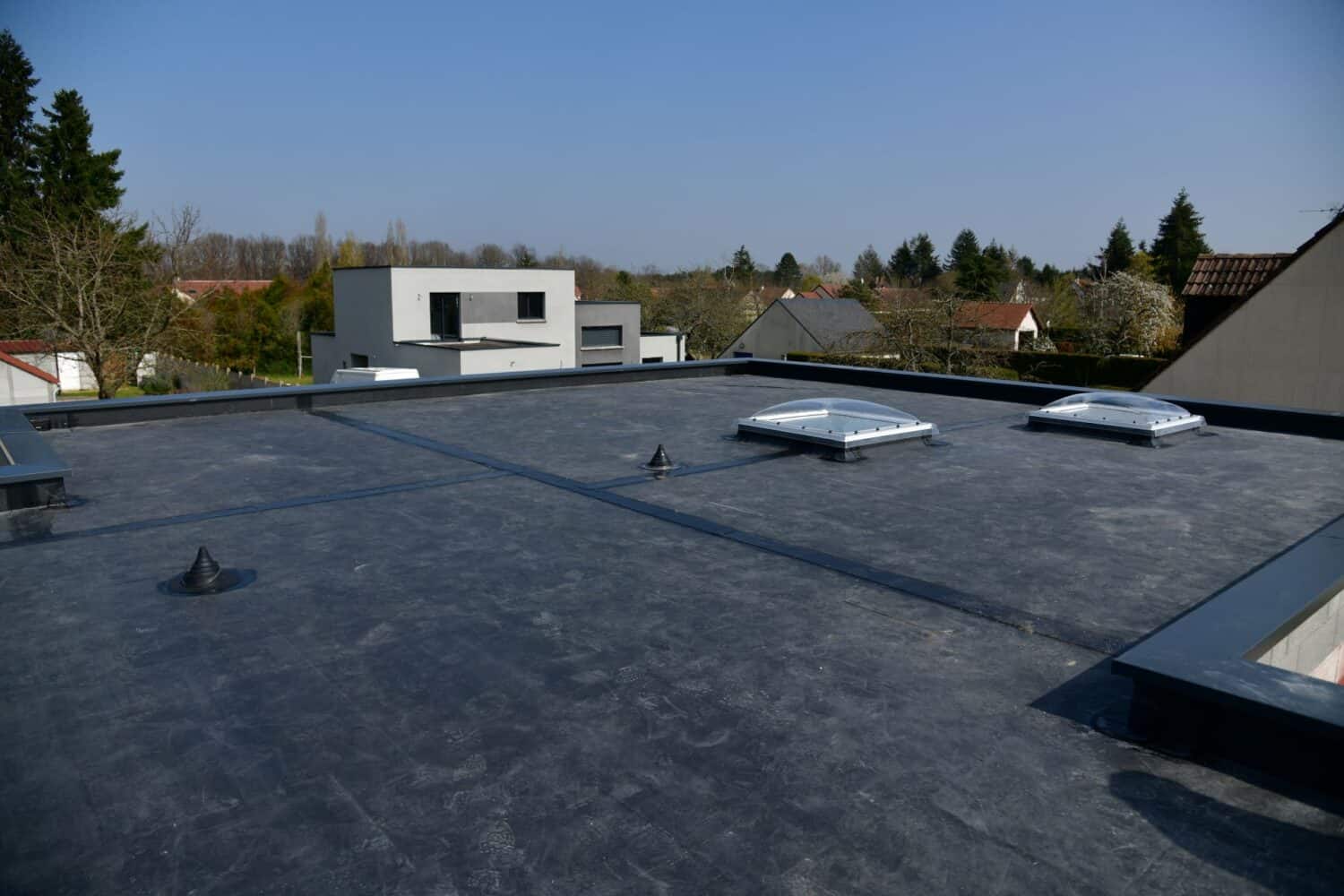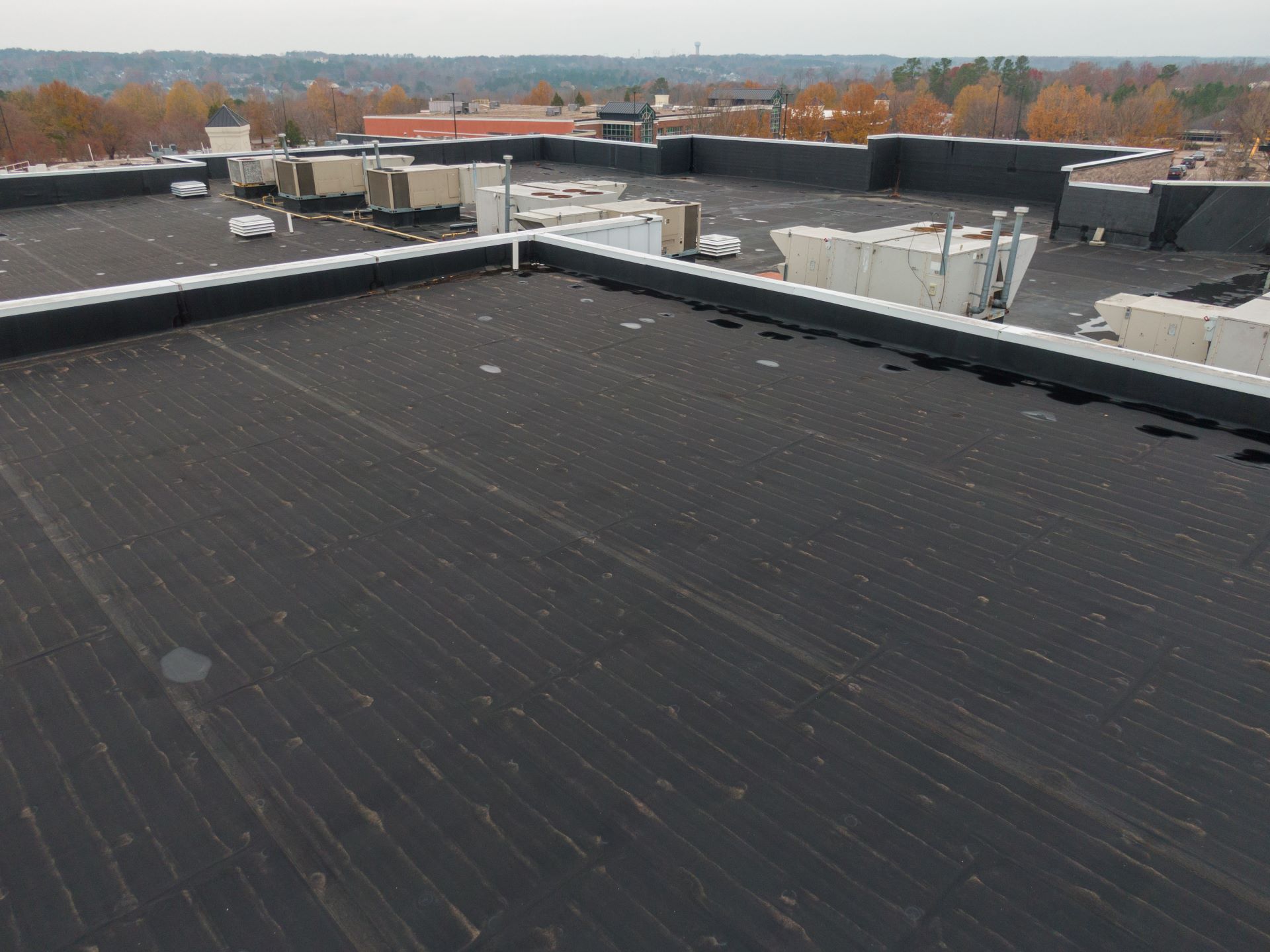EPDM roofing is one of the most popular types of roofing materials, not only in residential projects but also in commercial ones. EPDM stands for Ethylene Propylene Diene Terpolymer, which is a type of synthetic rubber membrane known for being extremely durable and cost-effective. As the world continues to face worsening weather conditions, with natural occurrences such as extreme temperatures, UV radiation, and hailstorms, EPDM roofing has become one of the most trusted choices when it comes to durability.
Using a blend of three monomers – ethylene, propylene, and diene – EPDM roofing can withstand severe conditions for a surprisingly long period of time. In fact, EPDM roofing can last for close to 40 years without any signs of weakening. Not only is EPDM durable, but it can also be installed with lighter tools compared to asphalt shingle roofs. It also requires much less prep work compared to slate roofs. EPDM roofing also possesses the unique ability of creating a sealed connection at its seams, keeping the likelihood of water seeping in to a very minimal risk.
In this EPDM Roofing Guide, we’l discuss in-depth what EPDM roofing is, its advantages and disadvantages, how it is installed, its lifespan and the cost considerations to take into account before purchasing EPDM roofing for your project.
What is EPDM Roofing?
EPDM roofing is composed of single-ply synthetic rubber grouped within the family of EPDM roofing materials. EPDM roofing is widely used as a roof membrane on low-slope buildings, including commercial and residential structures. It is made from very large sheets in widths up to 50 ft (15.2 m) and 60 and 80 mm (thousandths of an inch) in thickness
What makes EPDM great as a roofing solution goes beyond the composition to simplicity of installation and flexibility of design. The almost paper-thin single-ply rubber membrane simplicity of installation reduces installation complexity, reducing labor costs, and installation times. EPDM roofing materials are easy to work with, and its flexibility allows roofing crews to work rapidly and efficiently on roofs of different shapes and sizes. EPDM roofs are particularly useful as the lightweight characteristic relieves some of the stresses to the building’s structure, making it an excellent option for buildings that need to be retro-fit to reduce the roofing system’s weight.
EPDM roofing material is available in two color options – black or white – allowing for ease of adaptation to different climates and color preferences. In warmer climates, few things are as valuable as minimizing heat radiated into buildings and consuming energy to maintain comfortable air-conditioned temperatures. White EPDM is especially popular in some areas of North America and the tropics where the reflective properties of the white shingle deflect heat and keep the heat index of the structure to a minimum. Architects and builders like to keep the metabolic loads at a minimum. EPDM roofing combines the simplicity and installation speed of fluoropolymer TPO roofing with many of the durability and reliability characteristics of PVC roofing.
Advantages of EPDM Roofing
An EPDM roofing membrane is a synthetic rubber roofing material used on many types of building roofs in varying climates for its weathering and ozone as well as temperature extremes durability and flexibility. EPDM roofing rubber can withstand the test of time and the unpredictable elements of mother nature. All in all, EPDM roofs offer several advantages that make it a top choice for owners of buildings, roofing contractors and architects alike:
- Durability: EPDM membranes are highly resistant to weathering, UV radiation, ozone and temperature extremes, making them extremely versatile and suitable for a variety of different climatic conditions. Rubber EPDM roofs provide excellent durability and flexibility, making them a great choice for many different roofing projects year after year.
- Cost-effectiveness: EPDM roofing can be successfully installed via several different methods and can be applied in thicker than traditional single ply roofs providing flexibility and accommodating to different project needs. EPDM roofing rubber offers the best of both worlds with flexibility when installing as compared with most other roofing systems.
- Flexibility: EPDM membranes stay flexible even down to –40 degree temperatures allowing for ease of installation as well as expansion and contraction without cracking or splitting.
- Ease of Installation: EPDM roofing rubber can be installed using a variety of methods, including fully adhered, mechanically attached, or ballasted systems, providing flexibility for different project requirements.
- Low Maintenance: Installed properly, EPDM roofs can provide years of nearly maintenance free protection. EPDM roofing is extremely durable and low in maintenance.
- Energy Efficiency: White EPDM membranes reflect or bounce away up to 87% of sunlight penetrating radiation which can reduce cooling costs for structures in hot-sun climates.
- Longevity: EPDM roofing systems on well-installed and properly maintained buildings can last for many years. The lifespan of EPDM roofing is key, and proper EPDM roofing installation techniques should be followed to achieve this.
Disadvantages of EPDM Roofing
While EPDM roofing offers many benefits, it also has some limitations that should be considered:
- Susceptibility to Punctures: EPDM membranes are susceptible to punctures from sharp objects or debris. Unless the punctures are repaired immediately, they will let water in.
- Limited Aesthetics: EPDM roofs are available in either black or white, making them far less attractive than metal, asphalt shingles or some other roofing materials.
- Seam Vulnerability: If the seams of an EPDM roofing system are not installed and maintained correctly, they can fail and begin leaking.
- Environmental Impact: While EPDM roofing can be recycled, it cannot be made without fossil fuels and chemicals.
Installation Methods for EPDM Roofing
EPDM roofing can be installed using several methods, each offering its own set of advantages and considerations:
- Fully Adhered: EPDM membranes are bonded directly to the substrate using specified adhesives, providing a complete, watertight and extremely durable bond.
- Mechanically Attached: EPDM membranes can be either screwed or mechanically attached to the roof deck providing additional wind uplift resistance, ease of repair.
- Ballasted: EPDM membranes are held down by the weight of large rock pavers or stone. They provide a relatively low-cost roofing system, simplicity, and great strength while accommodating thermal expansion and contraction.
The choice of installation method depends on factors such as building design, climate, budget, and aesthetic preferences.
Lifespan and Maintenance of EPDM Roofing
Proper installation and regular maintenance also extend the service life of an EPDM roofing system. Maintenance tasks may include:
- Inspecting seams and flashings for signs of damage or deterioration
- Clearing debris from drains and gutters to prevent water pooling
- Checking for punctures or tears and repairing them promptly using compatible materials
- Applying a protective coating or sealant to enhance UV resistance and prolong the life of the membrane
Cost Considerations for EPDM Roofing
The cost of installing an EPDM roofing system varies depending on factors such as roof size, complexity, location, and chosen installation method. Generally, EPDM roofing is more affordable than alternative materials like metal or PVC. However, specific cost considerations include:
- Material Costs: EPDM membranes are priced per square foot, with thicker membranes and reinforced options costing more than standard thicknesses. EPDM roof costs vary depending on factors such as roof size, chosen installation method, and local labor rates.
- Labor Costs: Installation costs vary depending on the chosen installation method, roof accessibility, and labor rates in the local market.
- Additional Components: Costs may include insulation, flashing, adhesives, fasteners, and other accessories required for a complete roofing system.
- Long-Term Value: While EPDM roofing may have a higher upfront cost compared to traditional asphalt shingles, its durability and longevity can provide cost savings over time in terms of reduced maintenance and replacement expenses.
EPDM Roofing for Residential Use
EPDM roofing is a great residential application for homes with low-slope or flat roofs. The reason EPDM roofing makes a great residential application is the variety of structures where it can be applied. The EPDM material can be installed across several different building types, including single family homes, townhouses, condominiums, and apartment buildings.
EPDM Roofing for Commercial Applications
EPDM roofing is used for a wide range of commercial applications such as office buildings, shopping centers, warehouses, industrial facilities, or institutional buildings due to their exceptional durability, affordability, and ease of installation and maintenance. EPDM roofing systems can be installed on flat or sloped roof substrates and can cover horizontal, vertical, tolerant, spherical, and unique shaped applications.
Conclusion
EPDM roofing material, composed of synthetic rubber, stands as a versatile and durable option for both residential and commercial applications. EPDM roofing offers a host of benefits that make it a preferred choice for both residential and commercial applications. Its durability, flexibility, cost-effectiveness, and ease of installation make it a versatile solution for low-slope roofs. By understanding the advantages, disadvantages, installation methods, lifespan, cost considerations, and suitability for various projects, building owners, roofing contractors, and architects can make informed decisions when selecting EPDM roofing for their next project. With proper installation and maintenance, EPDM roofing systems can provide reliable protection and peace of mind for decades to come.


